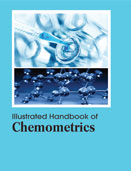Handbooks

The science of chemometrics gives pectroscopists many different ways to solve the calibration problem for analysis of spectral data. Chemometrics as a discipline blends modern mathematical and statistical techniques with chemical knowledge for the design, control, and evaluation of chemical measurements. For complex systems, such as those involving biomedical trace element research, the multidisciplinary efforts toward problem formulation and measurement process design and evaluation can be substantially aided by exploratory chemometric approaches. Applications of some of the more powerful techniques, such as principal component factor analysis, are illustrated by multivariable interlaboratory quality control, assessment of pollutant origins, and exploration of daily dietary intake data. In this work, we will outline the use of different tools within chemometrics and the theory behind it. We will highlight the importance of understanding the different model features, how to use them correctly and how to interpret relevant plots.
Chemometrics means performing calculations on measurements of chemical data. Chemometrics is fundamentally interdisciplinary, using methods frequently used in main data-analytic disciplines such as multivariate statistics, applied mathematics, and computer science, so that problems in chemistry, biochemistry, medicine, biology and chemical engineering may be solved. This can be anything from- calculating pH from a measurement of hydrogen ion activity to computing a Fourier transform interpolation of a spectrum.
Illustrated Handbook of Chemometrics covers all major topics in chemometrics, from basic statistics through modeling and databases right up to the latest regulatory issues. The science of chemometrics gives spectroscopists many different ways to solve the calibration problem for analysis of spectral data. Chemometrics is applied to solve both descriptive and predictive problems in experimental natural sciences, especially in chemistry. In descriptive applications, properties of chemical systems are modeled with the intent of learning the underlying relationships and structure of the system. The key to understanding chemometrics is in not necessarily understanding the mathematics of all of the different methods; it is to know which model to use for a given analytical problem and properly applying it. Chemometric techniques are mainly employed in analytical chemistry and metabolomics, and the development of improved chemometric methods of analysis also continues to enhance the state of the art in analytical instrumentation and methodology. It is an application-driven subject, and consequently the typical chemometric methodologies are very extensively used industrially, academic groups are devoted to the sustained improvement of chemometric theory, method and application development. Chemometrics and its methods are versatile and there is a high level of abstraction as it characterizes the scientific disciplines extensively by the application of the statistical and mathematical methods, mainly the multivariate methods. The chemometric methods are expected to provide a rapid quantitative analysis of pharmaceutical properties of intermediate and finished dosage forms as characterized by the simple, nondestructive, and highly sensitive nature of the method. Illustrated Handbook of Chemometrics explores the use of statistical, mathematical and graphical techniques to aid in the analysis of chemical data. This Handbook guides the students and researchers involved in in chemistry, biochemistry, medicine, biology and chemical engineering.